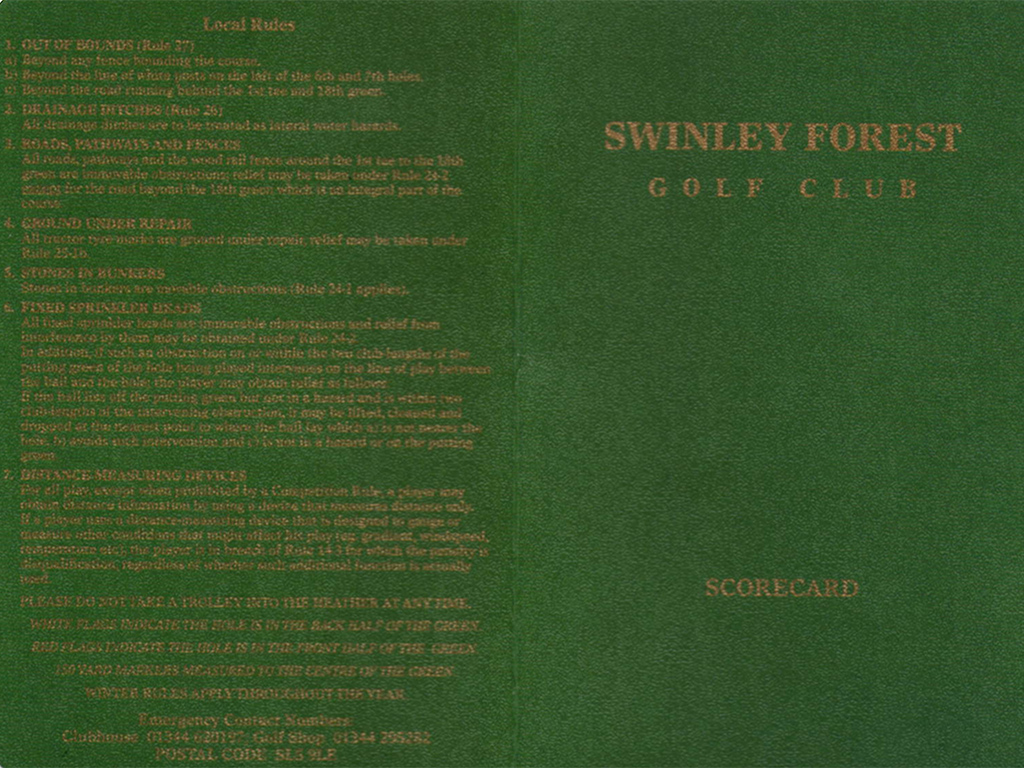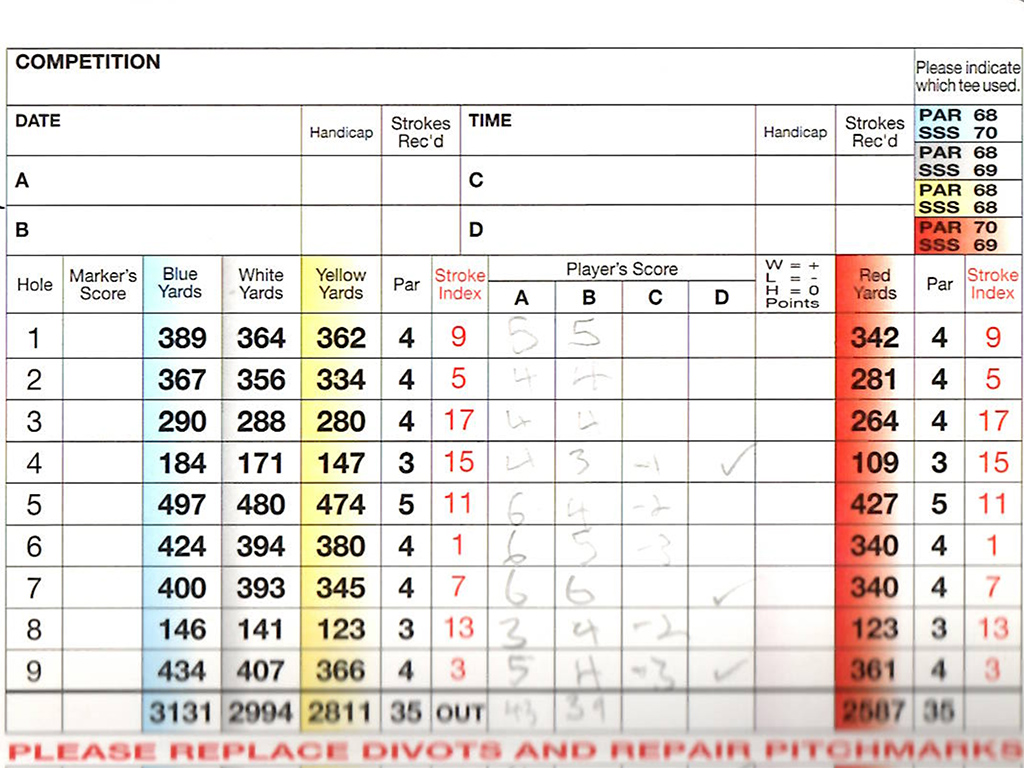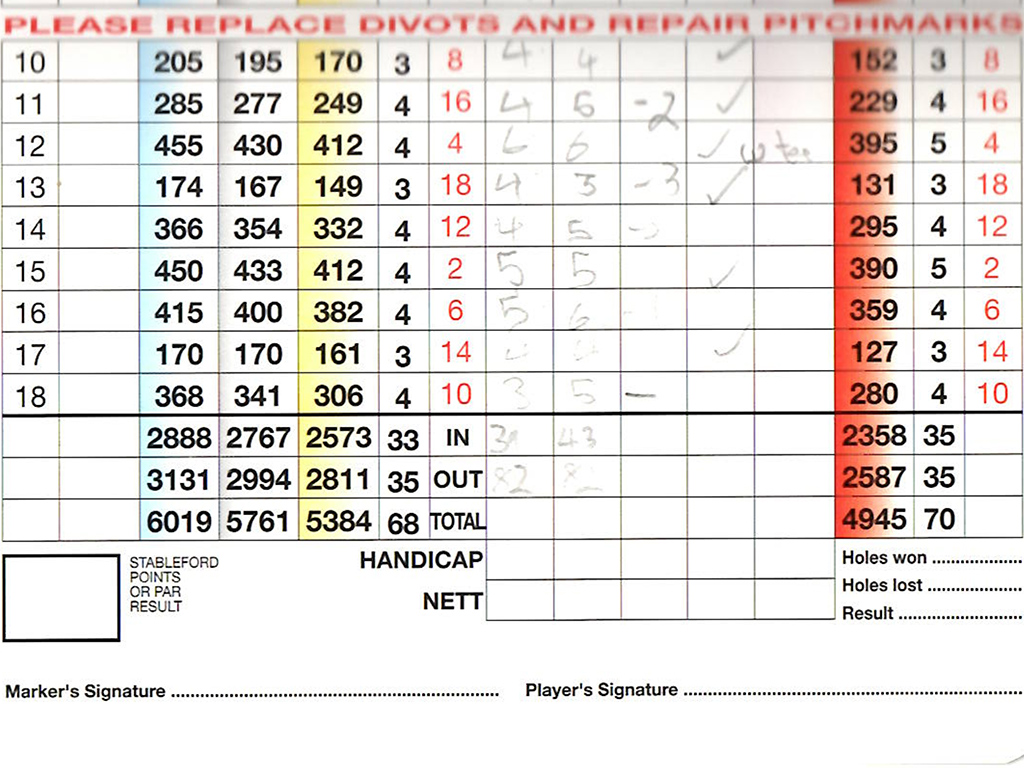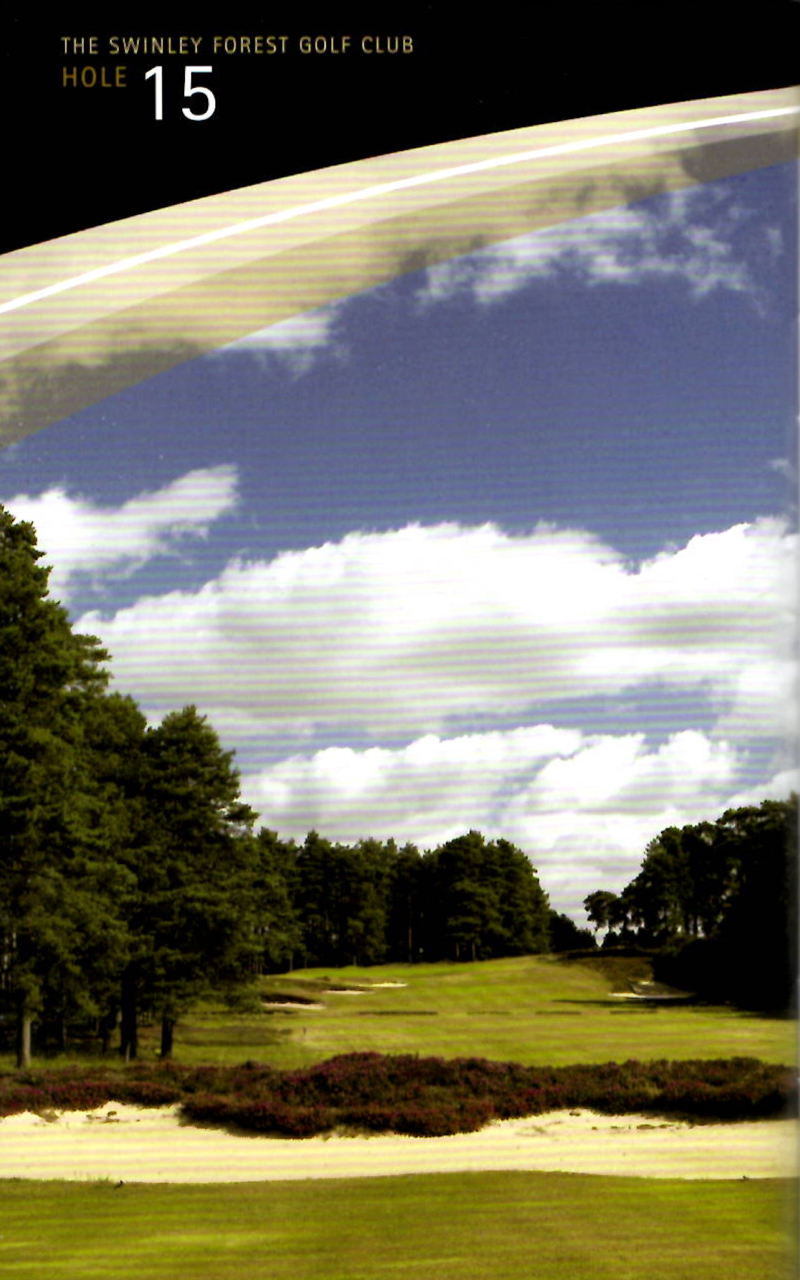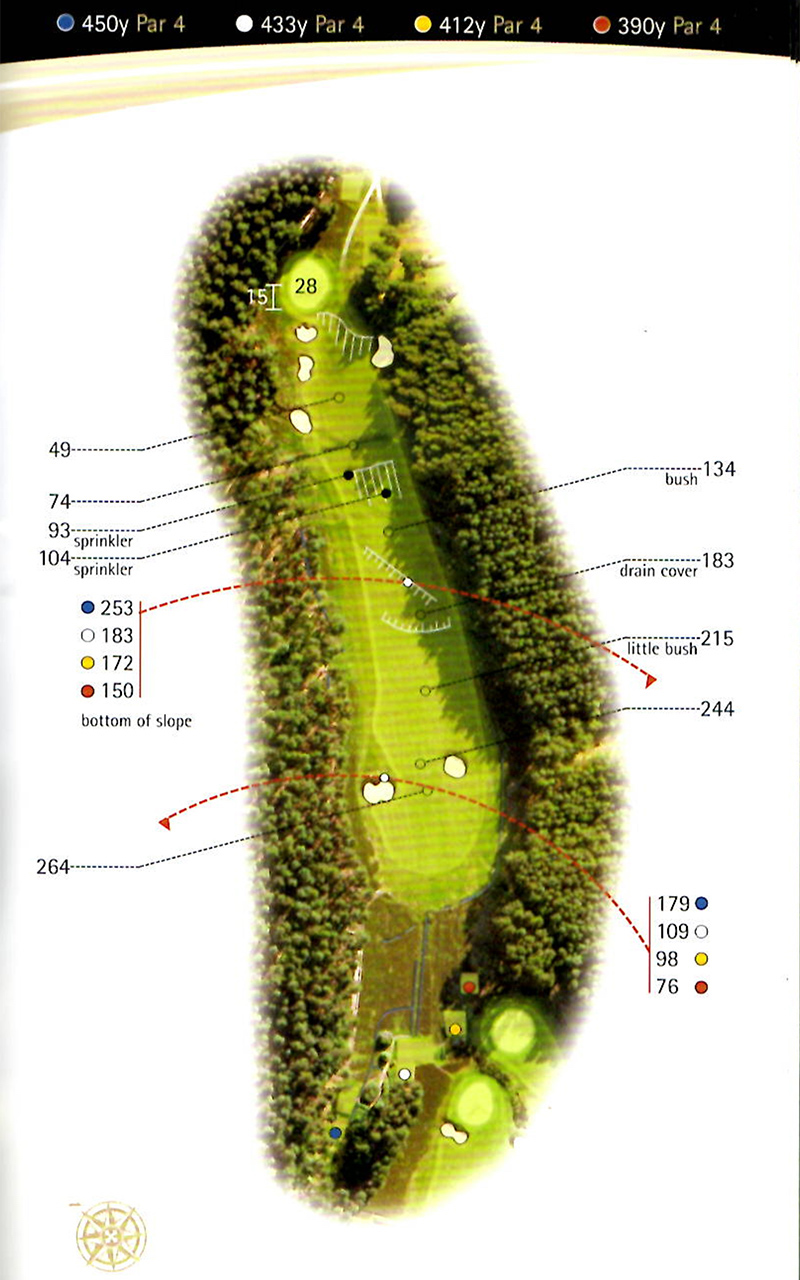The poster child for short golf courses and unconventional pars is Swinley Forest, a very private Harry Colt design. A par 68 (sometimes 69 if the 15th hole plays as a par 5, but we like it best as a long par 4) of barely over 6,000 yards, the last of the heathland courses on the Eclectic 18 UK has long been known as the one Colt referred to as his “least bad.” If you have been following along with this series, you know we’ve disagreed with the architect’s statement and prefer some of his other works not only in London but also around the UK and in other countries. Still, Swinley is special, and this list would not be complete without it.
Swinley Forest is one of the UK’s most exclusive clubs. At many top courses in Great Britain and Ireland these days, a visitor can book a tee time online. A game at Swinley, however, has always been a bit harder to arrange. In fact, we were shocked to learn during the research for this article that the club now has both a website and an email address, two uncharacteristic concessions to modernity. If you are lucky or tech savvy enough to gain access through both the literal and electronic gates, one of the most serene landscapes of Ascot’s heathland awaits you. Not much has changed over the years, and that is a big part of the charm.
A very pretty clubhouse sits on top of a hill and overlooks the 1st tee and 18th green. The first three holes are all short par 4s and might be a bit on the easy and unassuming side, but you can get yourself into trouble just wailing away on these holes.
There are carries over the heather, blind creeks that jut into fairways, and strings of heather mounds that almost form walls. These are among my favorite types of quirky hazards, and you find them throughout the UK. They are like the British version of chocolate drops, only they influence strategy more and function better in tandem with ditches. You can just imagine some poor ol’ chap digging a ditch by hand and flipping the dirt into little piles to create the berms.
Swinley Forest begins to reveal itself fully on the 4th tee. In routing the course, Colt found the five par 3s first, and the Redan-like 4th hole shows the fruits of that method.
However, it is the interplay between the short and long par 4s—or par 3.5s and 4.5s—that gives Swinley the ideal rhythm for matchplay. These half-par holes are the source of the course’s challenge. They urge you continually to go for the green in one or to stretch for it in two, and these fraught decisions help Swinley punch way above its weight. Holes like 6, 7, 9, and 12 throw a tremendously long and difficult counter to the short opening stretch, the reachable par-5 5th, and the drivable 11th.
The 15th at Swinley Forest, our pick, is a par 4 that would play the longest of any of the two-shotters on the Eclectic 18 UK. It’s a good time in the round—on both Swinley and our fantasy course—for a beast like this. Don’t waste your time walking backwards and left to the newer back tee, which bumps it up to a par 5. Surely, attempting to reach this uphill, 433-yard hole in two is one of the joys of playing one of Colt’s least changed courses. Par shouldn’t really matter anyway, as this course boasts no medals and no handicaps. Just beat your opponent up the hill and into the hole in fewer shots.
The 15th starts with a carry over a field of heather cut up in strange geometric patterns of ditches and berms. The question on the tee is whether to hug the left side of the fairway to shorten the hole or finish on the right edge of the fairway, taking the three bunkers along the left approach to the green out of play.
Off the tee, there are two bunkers, and the one on the left is the best aiming point for your drive. Where the hole bends slightly left and climbs the hill, Colt has placed some sandy scrapes and plenty of rumpled heathery ground to catch loosely played shots and protect the easier route to the green. In the middle of the fairway about three quarters of the way to the green, there is a string of heather-covered mounds perpendicular to the line of play. These mounds may not be in play if you hit the fairway, but if you end up in a bunker or the heather off the tee, they will wreak havoc on layup attempts.
Colt favored building greens on natural plateaus, and true to form, he located No. 15’s severe, two-tiered putting surface on just such a landform. The green blends into the surroundings very well—so well, in fact, that it is hard to see the false front until your ball has rolled back off of it. The front half of the green has a few waves and ripples, but mainly it just climbs up to the high tier back left. This top tier is flanked by a roll that provides a small backstop. With so much elevation change, the green is certainly not a forgiving end to this unforgiving hole.
-
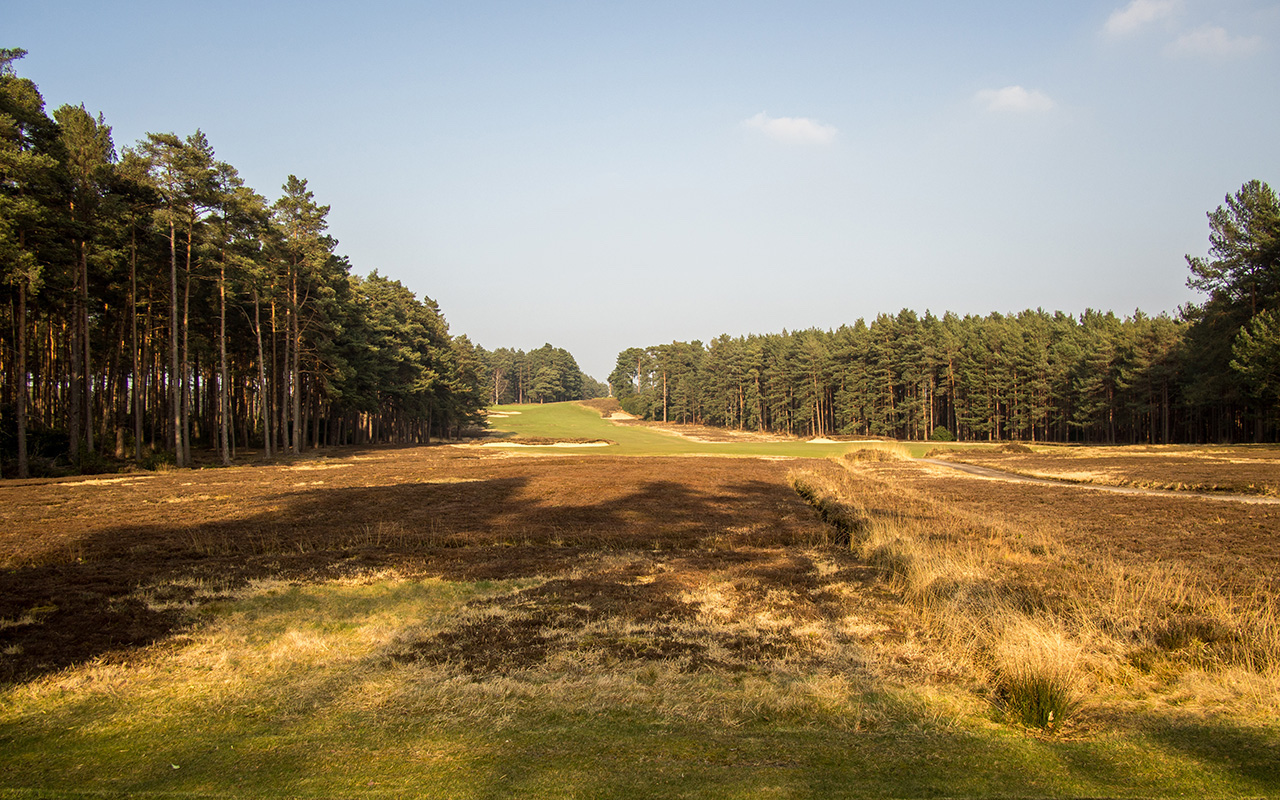
The 15th hole at Swinley Forest
-
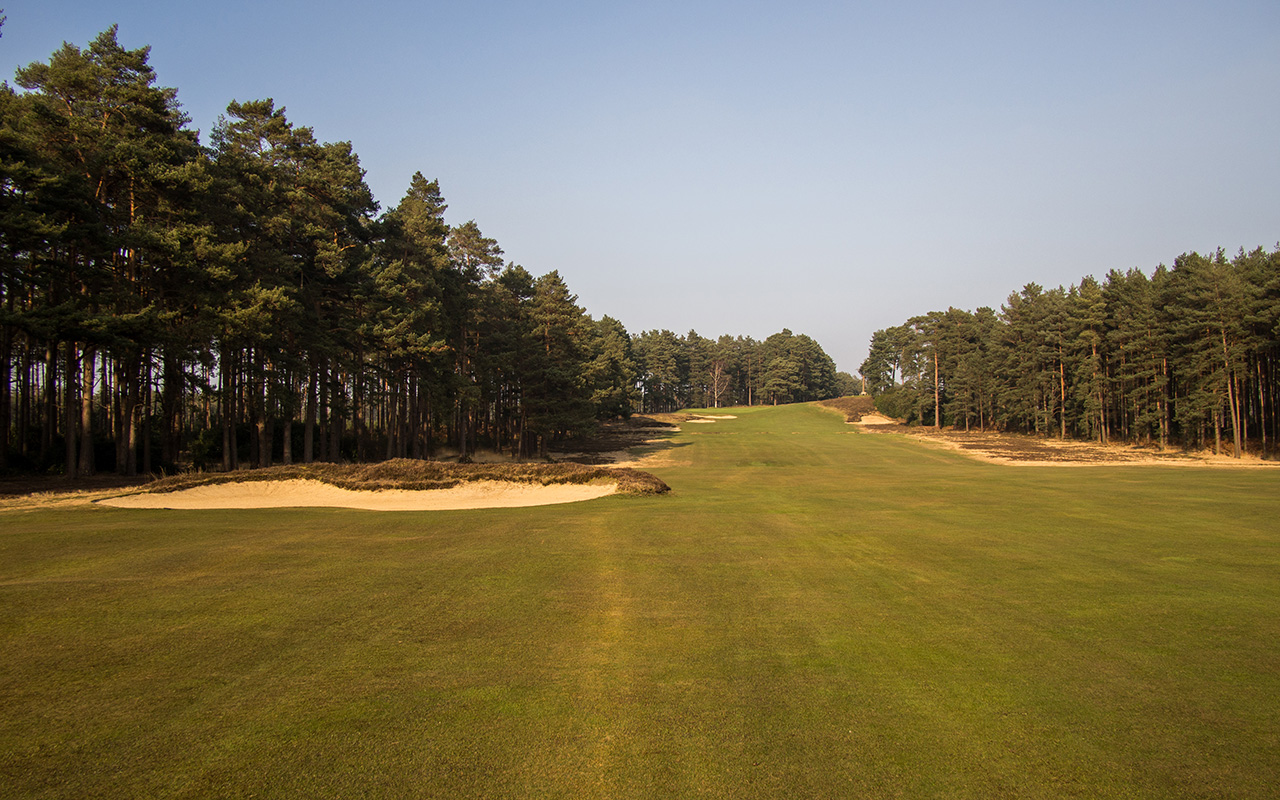
The 15th hole at Swinley Forest
-
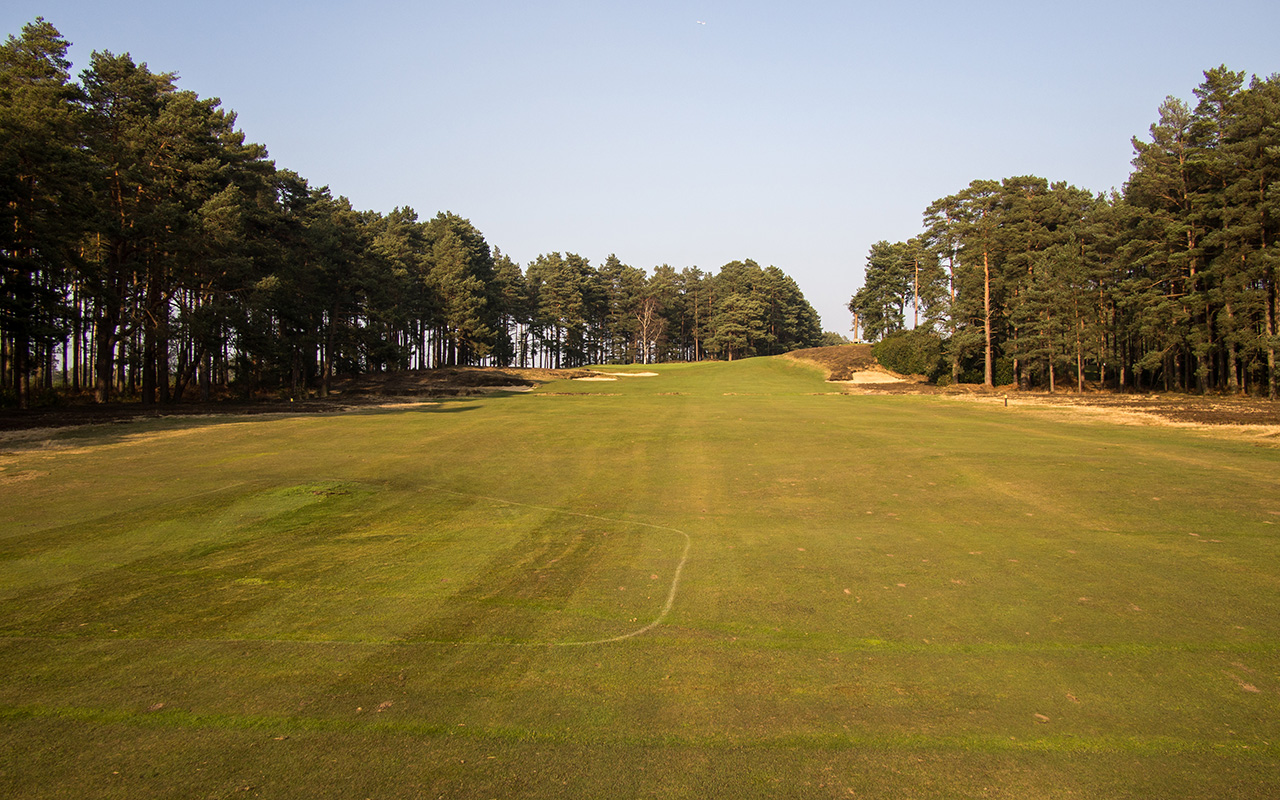
The 15th hole at Swinley Forest
-
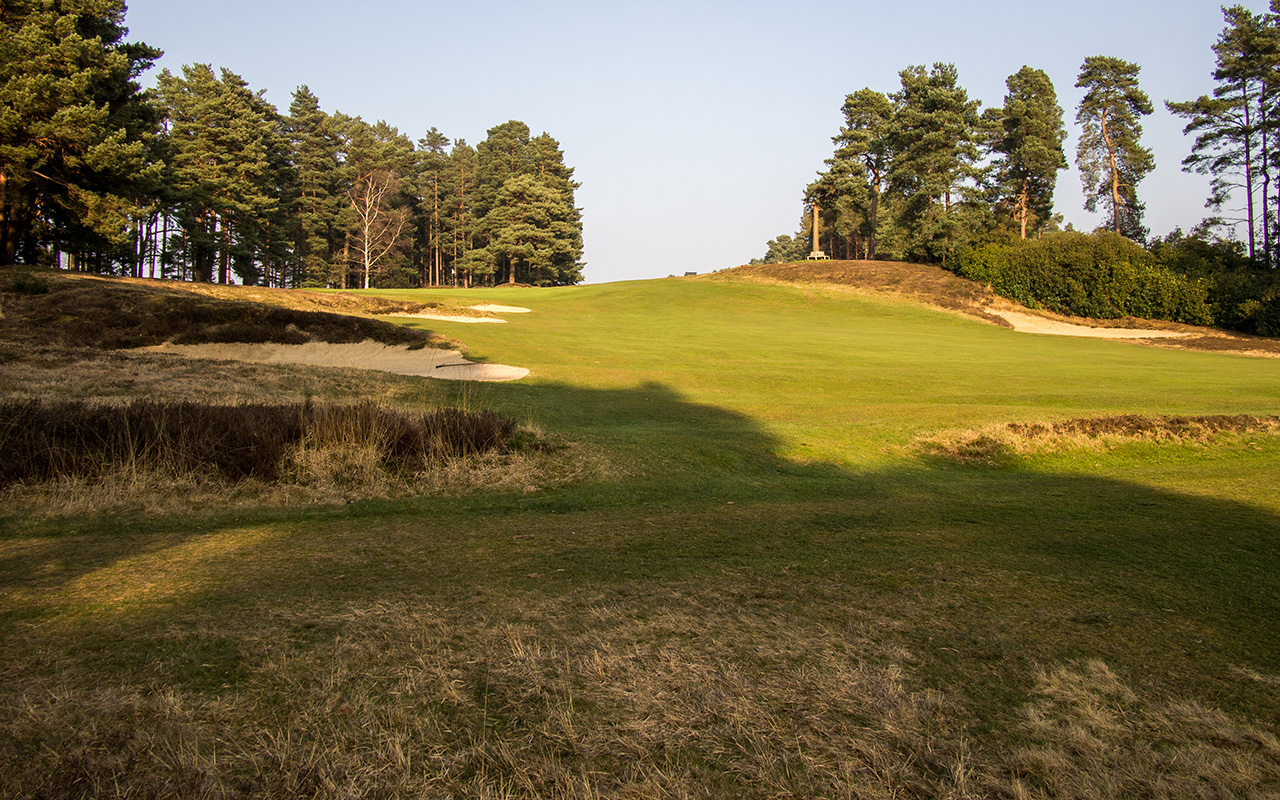
The 15th hole at Swinley Forest
-
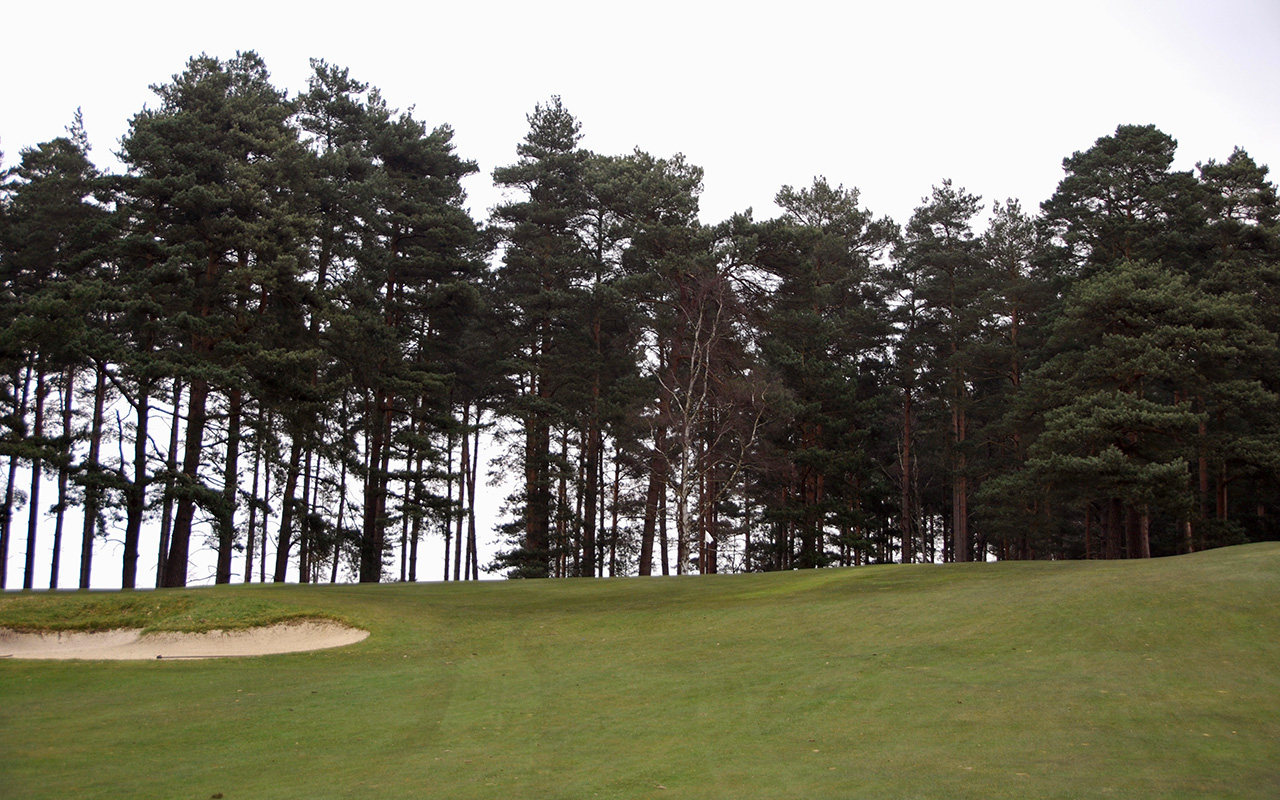
The 15th hole at Swinley Forest
-
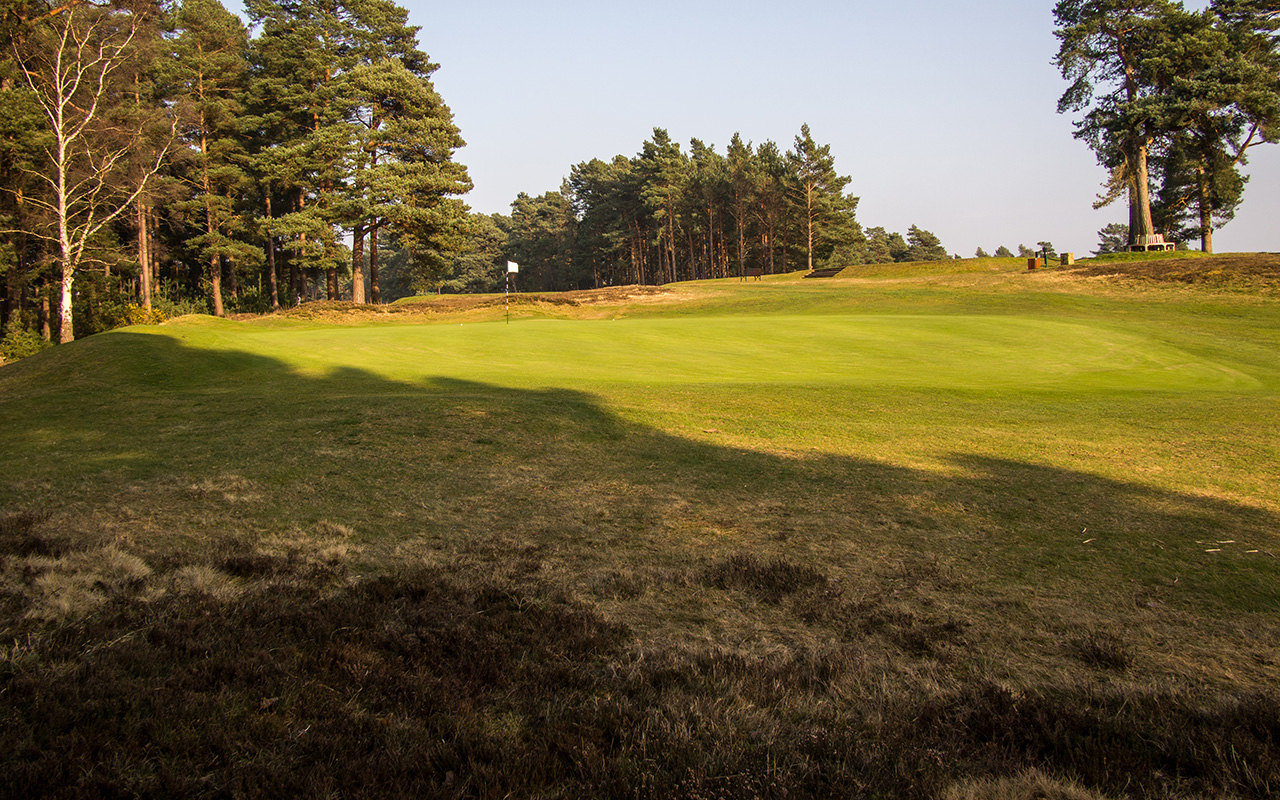
The 15th hole at Swinley Forest
-
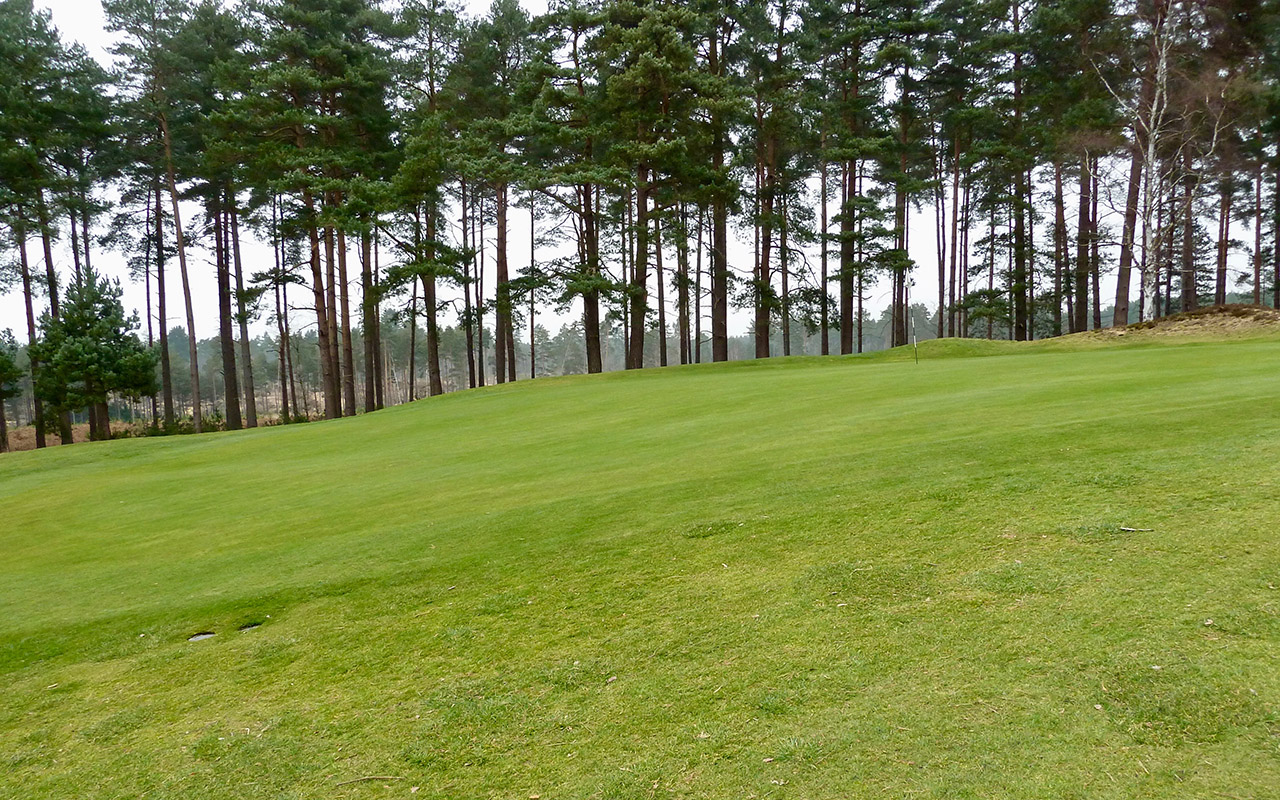
The 15th hole at Swinley Forest
-
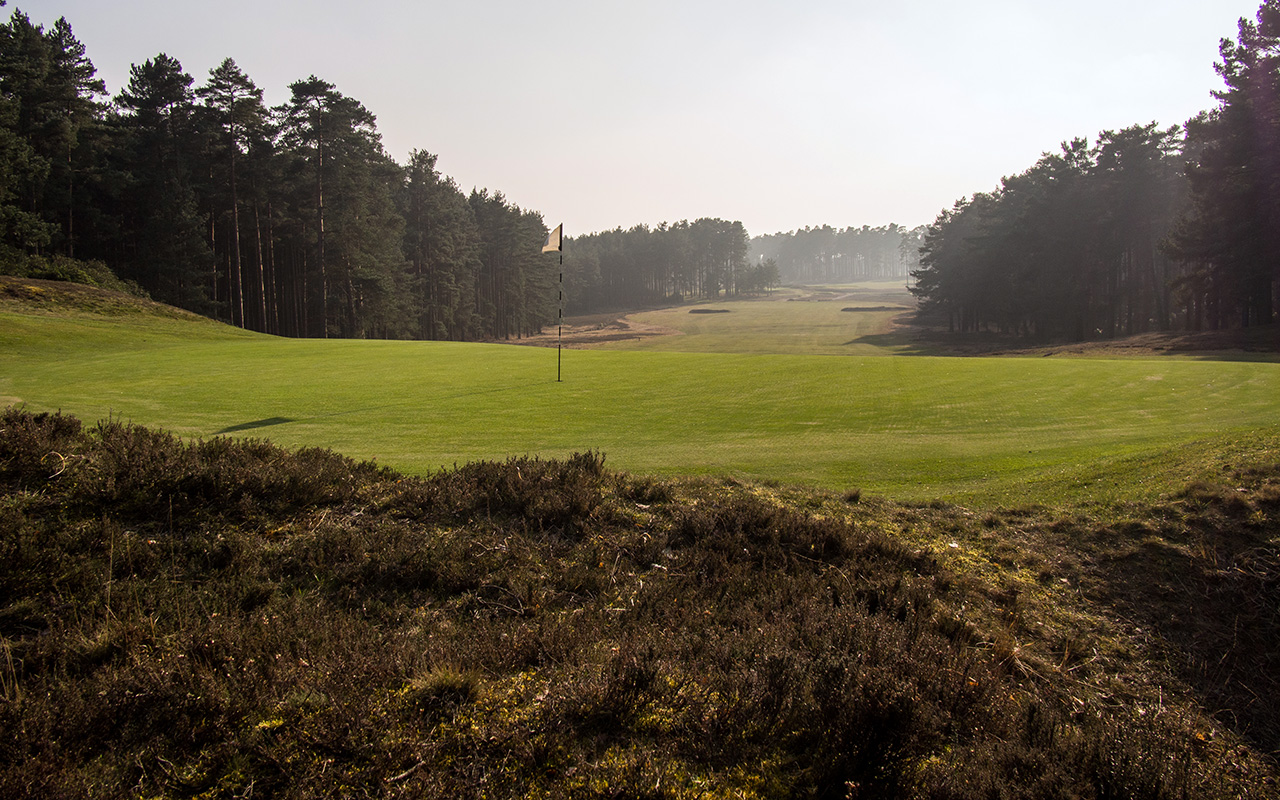
The 15th hole at Swinley Forest
As compelling as No. 15 is, architects like us have a hard time not occasionally diverting our gaze to the thin line of trees on the left and the natural terrain underneath, and wondering what it must have been like to be Harry Colt in the 20th century. The rolling, sandy heathland southwest of London is incredible for golf. Imagine having the pick of that land and getting to route golf holes through it!
Eclectic 18 UK is the brainchild of golf course architects Jaeger Kovich and Clyde Johnson. Read more about the series here, and follow Jaeger and Clyde on Instagram.


 by
by 